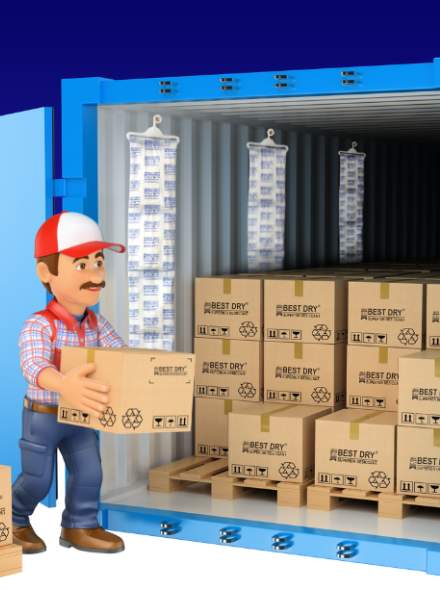Desiccants are hygroscopic substances that attract and absorb moisture from the surrounding air to maintain a state of dryness. These materials remove most of the humidity to ensure environment remains dry.
What Are the Benefits of Using Desiccant Packs?
The major benefit of desiccants is that they are perfect for protecting products from moisture.
Moisture can cause significant damage to products, particularly expensive products like electronics and semiconductors. Also, high levels of humidity cause the growth of fungus, mildew, and mold.
For example,pharmaceutical companies use desiccant packs to keep their medicine and pills safe from moisture. Leather goods companies also use desiccant packs to keep their products safe from harm. Even the aerospace industry uses desiccant packs as a means to protect missile components.
What Are the 4 Common Types of Desiccants?
There are different types of desiccants, the most common and well-known of which is silica gel desiccant. These drying packets are commonly found in medication bottles, shoe boxes and food packages. Other desiccants include bentonite clay desiccant,container desiccant,calcium chloride desiccant.calcium oxide desiccant, Magnesium chloride desiccant and molecular sieves desiccant,etc.
Here is a summary of the different desiccants.
1. Silica Gel Desiccants
Silica gel is a desiccant made from silicon dioxide, a naturally occurring mineral. The silicon dioxide is purified and then processed into beads or granules. It is one of the most commonly used desiccants,can absorb nearly 30% of its weight in moisture.it stays the same size and shape once it has absorbed water.
2. Bentonite Clay Desiccants
Bentonite Clay Desiccants are made from a naturally occurring mineral called calcium aluminosilicate, bentonite clay is a chemically inert and non-corrosive desiccant. As a result, it will not react to the chemicals in or around products or cause corrosion.
Desiccant clay is more effective in temperatures of up to 120 degrees Fahrenheit and can absorb nearly 30% of its weight in moisture. Like silica gel, bentonite clay stays the same size and shape once it has absorbed water.
Bentonite clay is one of the least expensive desiccants, making it a cost-effective ingredient to add to desiccant packages. If you are using clay as your primary desiccant, it is essential to consider the temperatures your products may experience during transit.
3.Calcium chloride desiccant
Calcium chloride desiccant is a type of moisture-absorbing material that utilizes the hygroscopic properties of calcium chloride to control humidity and prevent moisture-related issues in various environments. It can be used as a multipurpose desiccant in the industrial field, such as for drying nitrogen, oxygen, hydrogen, hydrogen chloride, sulfur dioxide, and other similar compounds.
Similar to silica gel desiccant, when a calcium chloride desiccant becomes saturated with moisture, it can be regenerated by heating it to release the absorbed water, restoring its moisture-absorbing capacity for reuse.
4. Calcium Oxide Desiccants
Calcium Oxide Desiccants are also known as quicklime desiccant, calcium oxide is calcinated or re-calcinated lime. The calcination process removes any volatile substances, such as carbon dioxide, to make it safer. Calcium oxide can absorb a significant amount of water in low humidity levels compared to other desiccants.
Quicklime absorbs water slowly, so it can take a few days to remove all the moisture altogether. Unlike bentonite clay and silica gel, calcium oxide swells as it absorbs water. Calcium oxide is usually limited to use in dehydrated foods.
5.Container Desiccant
Container desiccants target the moisture inside the sea container, preventing cargo damages, like mold / mildew, corrosion, caking, staining, discoloration, or moisture induced malfunction.
6. Molecular Sieve Desiccant
Molecular sieves are synthetic crystalline aluminosilicates designed to absorb molecules of a specific size. The pore size of the sieve can be designed to attract and retain particular substances based on their molecule size. As a result, molecular sieves are one of the most effective desiccants that can absorb water from other desiccants, including silica gel.
Molecular sieves are mainly used for reagents and biochemical packaging, as they can be tailored to specific molecules. These are the most expensive desiccants.


